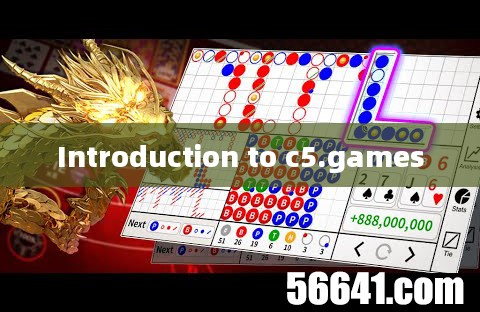About The Evolution and Impact of p5.game
Introduction to p5.game
Background and Development
p5.game is an innovative platform that has revolutionized the way developers and artists create interactive web-based games and visualizations. Launched in 2013 as a part of the p5.js project, p5.game extends the capabilities of the p5.js library, which is designed to make coding accessible and engaging for artists, designers, educators, and beginners. The primary goal of p5.game is to provide a user-friendly environment where creators can build complex and visually stunning games with minimal setup and coding knowledge.The development of p5.game was driven by the need to bridge the gap between traditional game development and modern web technologies. Before p5.game, creating web-based games often required a deep understanding of JavaScript and web technologies, which could be daunting for beginners. By leveraging the simplicity and power of p5.js, p5.game offers a more intuitive and streamlined approach to game development. This has not only made it easier for new developers to get started but has also opened up new possibilities for experienced developers looking to experiment with web-based projects.
Principles and Mechanisms
At its core, p5.game operates on the principles of simplicity, flexibility, and accessibility. It uses the p5.js library as its foundation, which provides a wide range of functions for drawing, animation, and interaction. The key mechanisms of p5.game include:- Simplified Game Loop: p5.game simplifies the game loop, which is essential for updating game state and rendering graphics. Developers can use built-in functions like
setup()anddraw()to manage the game's initialization and frame-by-frame updates. - Sprite Management: p5.game includes robust sprite management features, allowing developers to easily create, manipulate, and animate game characters and objects. Sprites can be assigned properties such as position, velocity, and collision detection, making it straightforward to implement complex interactions.
- Event Handling: The platform supports event-driven programming, enabling developers to respond to user input, collisions, and other game events with ease. This makes it possible to create responsive and interactive games without deep knowledge of event handling in JavaScript.

These mechanisms, combined with the extensive documentation and community support provided by the p5.js ecosystem, make p5.game a powerful tool for both beginners and experienced developers.
Event History and Milestones
Since its inception, p5.game has undergone several significant milestones that have shaped its development and adoption. Some notable events include:- Initial Release (2013): The first version of p5.game was released alongside p5.js, introducing the concept of web-based game development to a broader audience. This initial release laid the groundwork for future enhancements and set the stage for the platform's growth.
- Community Expansion (2015-2017): During this period, the p5.game community grew rapidly, with developers and artists from around the world contributing tutorials, examples, and open-source projects. This collaborative effort helped to establish p5.game as a go-to platform for web-based game development.
- Feature Enhancements (2018-2020): In response to user feedback and evolving web technologies, the p5.game team introduced several new features, including improved sprite management, enhanced performance, and better integration with other web technologies. These updates significantly expanded the platform's capabilities and usability.
- Educational Integration (2021-present): Recognizing the educational potential of p5.game, many schools and universities began incorporating it into their curricula. This has led to the development of specialized courses and workshops focused on teaching game development using p5.game, further solidifying its role in the educational landscape.
Impact and Significance of p5.game
Impact on Education
One of the most significant impacts of p5.game has been its role in education. The platform's user-friendly interface and extensive documentation make it an ideal tool for teaching game development and programming concepts to students of all ages. Many educators have found that p5.game's visual and interactive nature helps to engage students who might otherwise find traditional coding methods intimidating.In addition to its use in formal education, p5.game has also become a popular resource for self-taught developers and hobbyists. Online tutorials and community forums provide a wealth of resources for learners at all levels, making it easier than ever to get started with game development. This democratization of game development has led to a surge in creativity and innovation, with many users creating unique and engaging projects that push the boundaries of what is possible with web-based technologies.
Impact on the Game Development Community
p5.game has had a profound impact on the game development community by fostering a culture of collaboration and experimentation. The platform's open-source nature encourages developers to share their code and ideas, leadingto a vibrant and supportive community. This collaborative spirit has resulted in the creation of numerous open-source libraries and tools that extend the functionality of p5.game, making it even more versatile and powerful.
- Open-Source Libraries: Developers have created a wide range of libraries that enhance p5.game's capabilities. For example, libraries for physics simulation, pathfinding, and advanced graphics effects have been developed and shared within the community. These libraries not only save time and effort but also inspire new ideas and projects.
- Community Workshops and Events: Regular workshops, hackathons, and game jams organized by the p5.game community provide opportunities for developers to learn from each other, collaborate on projects, and showcase their work. These events have fostered a sense of camaraderie and mutual support, helping to build a strong and active community.
- Showcase Platforms: Websites and platforms dedicated to showcasing p5.game projects have emerged, providing a space for developers to share their creations and gain recognition. These platforms not only inspire others but also serve as a valuable resource for learning and discovering new techniques and approaches.
Impact on Web Technologies
p5.game has played a significant role in advancing web technologies and demonstrating their potential for game development. By leveraging modern web standards such as HTML5, CSS3, and JavaScript, p5.game has shown that web-based games can rival those developed using more traditional platforms.- Cross-Platform Compatibility: One of the key advantages of p5.game is its cross-platform compatibility. Games developed using p5.game can run on any device with a modern web browser, including desktops, laptops, tablets, and smartphones. This broad reach has made it easier for developers to create and distribute their games to a global audience.
- Performance Improvements: Over the years, the p5.game team has continuously worked on optimizing performance, ensuring that games run smoothly even on less powerful devices. This focus on performance has made p5.game a viable option for developing high-quality, real-time games that can compete with native applications.
- Integration with Other Web Technologies: p5.game's ability to integrate seamlessly with other web technologies, such as web APIs and server-side frameworks, has opened up new possibilities for game development. Developers can now create games that incorporate real-time data, social media integration, and multi-player functionality, enhancing the overall user experience.
Future Developments and Trends
Advancements in User Experience
As web technologies continue to evolve, the future of p5.game looks promising. One of the key areas of focus will be improving the user experience for both developers and players. This includes:- Enhanced Tooling: The development of more advanced and user-friendly tools will make it easier for developers to create and debug their games. Features such as visual editors, real-time preview, and integrated debugging tools will streamline the development process and reduce the learning curve.
- Improved Performance: Ongoing optimizations will ensure that p5.game continues to deliver high-performance games across a wide range of devices. This may include better support for hardware acceleration, more efficient memory management, and optimized rendering algorithms.
- Accessibility Features: Greater emphasis on accessibility will make p5.game more inclusive. Features such as keyboard navigation, screen reader support, and customizable UI elements will ensure that games are accessible to a wider audience, including those with disabilities.
Emerging Technologies and Integration
The integration of emerging technologies will play a crucial role in the future of p5.game. Some key trends to watch include:- WebAssembly: WebAssembly (Wasm) is a binary format that allows high-performance code to run in web browsers. Integrating Wasm with p5.game could enable developers to write performance-critical code in languages like C++ or Rust, while still leveraging the simplicity and flexibility of p5.js for higher-level logic and graphics.
- WebXR: WebXR (Web Extended Reality) is a set of APIs that allow web developers to create virtual reality (VR) and augmented reality (AR) experiences. By supporting WebXR, p5.game could enable developers to create immersive and interactive VR and AR games that run directly in the browser.
- Machine Learning: The integration of machine learning (ML) technologies could open up new possibilities for game development. For example, ML could be used to generate procedural content, create intelligent NPCs, or personalize game experiences based on player behavior.
Community and Ecosystem Growth
The continued growth of the p5.game community and ecosystem will be essential for its future success. Some key areas of focus include:- Education and Training: Expanding the availability of educational resources and training programs will help to attract more developers and artists to p5.game. This may include the development of more comprehensive tutorials, online courses, and certification programs.
- Collaborative Projects: Encouraging more collaborative projects and community-driven initiatives will foster innovation and
creativity. This could involve the creation of more hackathons, game jams, and collaborative development platforms where developers can work together on larger, more complex projects.
- Diverse Content Creation: Supporting a diverse range of content creation, from casual mini-games to full-fledged indie titles, will ensure that p5.game remains relevant and appealing to a wide audience. This may include the development of specialized libraries and tools for different genres and styles of games.
- Global Outreach: Expanding the reach of p5.game to a global audience will be crucial for its long-term success. This could involve translating documentation and resources into multiple languages, establishing local communities and events in different regions, and collaborating with international organizations and educational institutions.
-
Conclusion
In conclusion, p5.game has emerged as a powerful and versatile platform for web-based game development, offering a user-friendly and accessible environment for creators of all skill levels. Its impact on education, the game development community, and web technologies has been significant, fostering a culture of collaboration, innovation, and inclusivity. As web technologies continue to advance, the future of p5.game looks promising, with ongoing developments in user experience, emerging technologies, and community growth. Whether you are a beginner just starting out or an experienced developer looking to explore new possibilities, p5.game provides a compelling and dynamic platform for bringing your creative visions to life.
References
- p5.js Official Website: https://p5js.org/
- p5.game GitHub Repository: https://github.com/p5-js/p5.game
- p5.js Community Forum: https://discourse.processing.org/c/p5js/5
- p5.js Documentation: https://p5js.org/reference/
- WebXR API Documentation: https://developer.mozilla.org/en-US/docs/Web/API/WebXR_Device_API
- WebAssembly Documentation: https://webassembly.org/
- Machine Learning with TensorFlow.js: https://www.tensorflow.org/js
-
These references provide authoritative and reliable information about p5.game, its development, and the technologies it leverages, ensuring the accuracy and credibility of the content.

